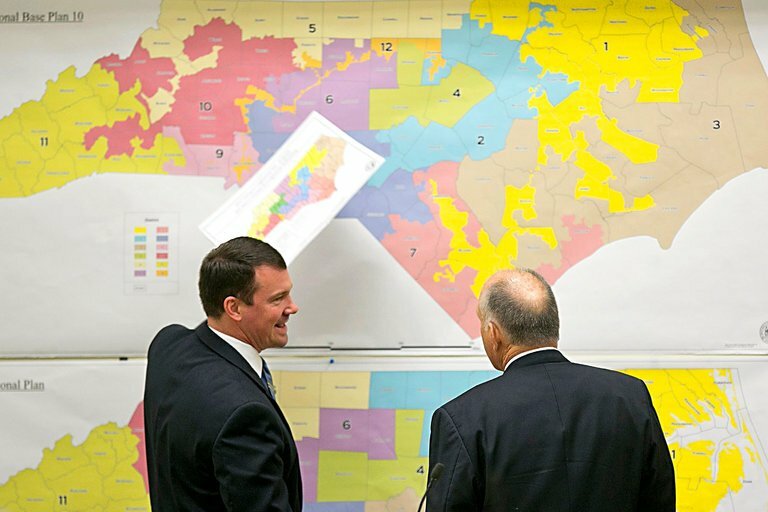As expected, the Elias Law Group has filed a lawsuit (Williams v. Hall) challenging some of North Carolina’s new congressional districts. As if they realized how unlikely they were to succeed in their attempt to stop elections under this map, they waited until the day candidate filing had started to file their complaint
The Challenged Districts
The lawsuit challenges four districts, all of which are currently represented by Democrats. Two of those now favor Republicans.
Congressional District 1, is currently represented by Don Davis. It is one of North Carolina’s traditional minority opportunity districts, which allows Black voters to elect representatives of their choice. Analysis by the John Locke Foundation rated the district D+0 (toss-up).
The complaint claims it had its “combined Black and Latino citizen voting age population” (CVAP, the oddity of this measure is noted below) reduced from 44.8% in the previous map to 44.6% in the current map. For context, according to data on Dave’s Redistricting, the Black voting age population (BVAP) is 40.42%.
Congressional District 6, is currently represented by Kathy Manning. It is rated R+9 (likely Republican). The complaint claims the district’s CVAP was reduced from 35.6% to 23.5%. The district’s BVAP is 19.31%.
Congressional District 12 is North Carolina’s second minority opportunity district. It is represented by Alma Adams. It is rated D+23 (safe Democratic). The complaint claims the district’s CVAP was increased from 44.2% to 48.6%. The district’s BVAP is 38.31%.
Congressional District 14 is currently represented by Jeff Jackson. It is rated R+8 (likely Republican). The complaint claims the district’s CVAP was reduced from 27.5% to 19.3%. The BVAP is 15.93%.
The plaintiffs have the chutzpah to claim that Jackson’s old district was “a minority-opportunity district.” The BVAP of the old district was 20.68%. If that is the standard, then any district that elects Democrats can be declared a minority opportunity district. It exposed the pretense that this lawsuit is about race instead of politics.
Oddities
Interestingly, plaintiffs avoid making any claims under the Voting Rights Act. All nine mentions of the law were either background references or statements that the four districts did not have to be drawn “to comply with the Voting Rights Act.” One reason for their avoiding the VRA is that all of their claims fail the so-called “Gingles test” for proving a racial vote dilution claim.
Instead, they claim that race was the “predominant factor” factor in drawing those districts in violation of the Equal Protection Clause of the Fourteenth Amendment.
It gets odder. The two districts in the suit that elected Black representatives still favor Democrats (even if one seat is competitive). The two districts in the suit that now favor Republicans both elected White Democrats. This is a political gerrymandering claim masquerading as a racial Gerrymandering claim.
Another oddity of this suit is that it deviates from the accepted practice of assessing districts based on the Black voting age population (BVAP) (See Cooper v. Harris (2017) and Allen v. Milligan (2022) for two examples). The most likely explanation for them not using that standard measure is that doing so would demonstrate the weakness of their case.
So, they craft a different measure: “Black and Latino citizen voting age population (CVAP). They do so without explanation or justification, although I suspect that judges will demand those once this case gets to a hearing.
The plaintiff’s refusal to allege a Voting Rights Act violation and their choice of using nonstandard measures belies a lack of confidence in their case. It is a well-placed lack of confidence.


